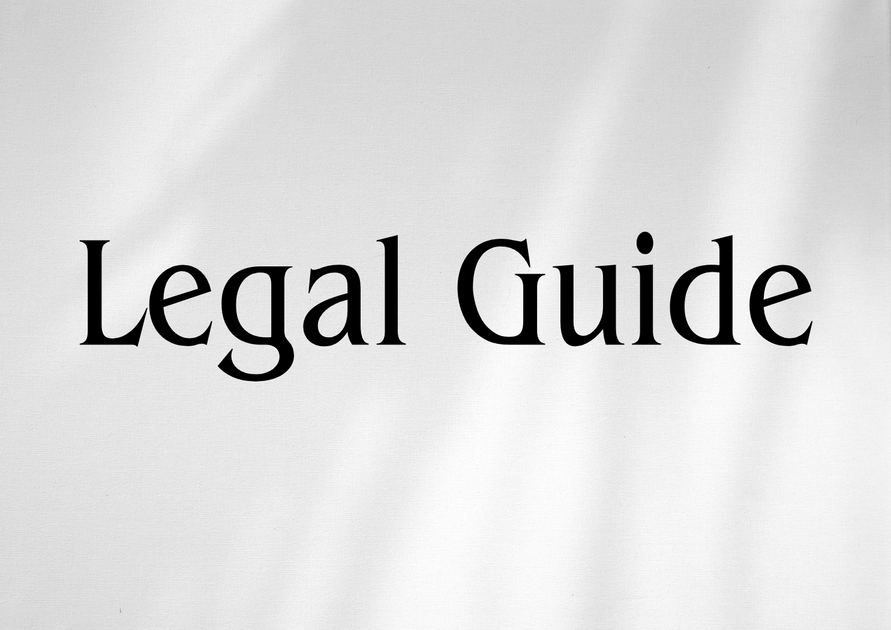Introduction: Navigating Loan Agreements and Credit Facilities in the UAE Landscape
The United Arab Emirates (UAE) continues to solidify its reputation as a formidable regional financial hub, supported by a modern and responsive legal framework that governs loan agreements and credit facilities. Robust legal infrastructure is vital for both lenders and borrowers to foster trust, facilitate investment, and support economic growth. With recent updates arising from Federal Decree-Law No. 50 of 2022 (the UAE Commercial Transactions Law) and corresponding Cabinet Resolutions, businesses and financial institutions must remain vigilant to comply with contemporary standards and avoid costly pitfalls. This article provides an in-depth analysis and professional guidance on the intricacies of loan agreements and credit facilities under UAE law—unpacking regulatory updates, practical applications, risk factors, and compliance strategies for 2025 and beyond.
Table of Contents
- Legal Framework Overview
- Key Elements of Loan Agreements in UAE
- Credit Facilities: Structures and Types
- Regulatory Updates and Compliance Requirements: 2025
- Risk Management and Legal Enforcement
- Case Studies and Hypothetical Scenarios
- Best Practices for UAE Businesses
- Conclusion & Forward-Looking Strategies
Legal Framework Overview
The Pillars: Statutory Foundation
The core legal framework for loan agreements and credit facilities in the UAE is anchored in:
- Federal Decree-Law No. 50 of 2022 on the Commercial Transactions Law
- Cabinet Resolution No. 57 of 2018 (as amended) governing security and enforcement procedures
- UAE Central Bank Regulations (including Circulars and Directives on credit and lending)
Federal Decree-Law No. 50 of 2022 (the “2022 CTL”) replaced its 1993 predecessor and has redefined provisions concerning lending, interest calculations, default consequences, and the enforceability of security rights. The UAE also adheres to principles set by the UAE Civil Code (Federal Law No. 5 of 1985) concerning contract formation, validity, and execution, further shaping the legal landscape.
| Aspect | Prior to 2022 CTL | 2022 CTL Updates |
|---|---|---|
| Default Interest Rate | Set by agreement; judiciary discretion if not specified | Explicit maximum capped at Central Bank rates |
| Security Enforcement | Judicial enforcement required in most cases | Simplified extrajudicial enforcement for certain collateral |
| Loan Documentation | Basic contracts, often less standardized | Emphasis on transparency, clearer terms, digital signatures |
| Consumer Protection | Basic disclosure norms | Enhanced disclosures and borrower rights |
Key Official Sources
For authoritative references, practitioners and organizations should consult the UAE Ministry of Justice, the Federal Legal Gazette (moj.gov.ae), and the UAE Central Bank (centralbank.ae), which regularly issue updated guidance on lending practices and compliance.
Key Elements of Loan Agreements in UAE
Structuring a Valid and Enforceable Loan
A loan agreement in the UAE must fulfill certain statutory requirements to be legally enforceable:
- Offer and Acceptance: In line with UAE Civil Code Article 129, clarity on consent is essential.
- Object and Purpose: The purpose must be lawful and defined.
- Consideration: Lending must be supported by a legitimate cause and value exchanged.
- Documentation: Though oral contracts are possible, written agreements—often notarized and digitally signed—are strongly advised for evidentiary security.
Recent years have seen an uptick in sophisticated loan structures: from bilateral corporate loans to large syndicated finance deals and Islamic (Sharia-compliant) facilities. The choice of structure influences rights, obligations, and enforcement options for all parties involved.
Typical Clauses for UAE Loan Agreements
- Interest Rate Terms: Specified in line with UAE Central Bank regulations and the 2022 CTL.
- Repayment Schedules: Outlining principal and interest installments.
- Security & Collateral: Charges over moveable and immoveable assets, registered under the UAE Collateral Registry (per Federal Decree-Law No. 4 of 2020).
- Events of Default: Conditions triggering acceleration or enforcement actions.
- Governing Law & Dispute Resolution: Most agreements designate UAE law, sometimes with reference to arbitration (e.g., DIFC-LCIA or ADGM Arbitration Centres).
Consultancy Insight
Legal practitioners strongly recommend customizing loan agreement templates in line with both statutory requirements and commercial realities. Boilerplate or imported foreign-law loan contracts rarely align with UAE’s nuanced legislative and enforcement requirements, exposing parties to avoidable litigation risks or unenforceable obligations.
Credit Facilities: Structures and Types
Overview of Credit Facility Products
Credit facilities are arrangements provided by banks or financial institutions allowing borrowers to draw funds up to a certain limit. Under UAE law, the structure, rights, and obligations attached to credit facilities are closely regulated, especially following Federal Decree-Law No. 50 of 2022 and updates from the UAE Central Bank.
| Type | Description | Typical Applications |
|---|---|---|
| Term Loan | Lump sum lent, repaid over fixed term with regular installments | Equipment purchase, project finance |
| Revolving Credit | Flexible drawdown/repayment within agreed limit | Working capital, cash flow management |
| Overdraft | Account holder allowed to withdraw above account balance | Short-term liquidity needs |
| Trade Finance | Facilities for import/export transactions (letters of credit, guarantees) | International trade |
| Islamic Finance Facilities | Sharia-compliant structures, e.g., Murabaha, Ijara, Musharakah | Faith-based investor/borrower requirements |
Legal Requirements for Credit Facilities
Each facility type is guided by regulations concerning transparency, interest calculation, and borrower notification:
- Disclosure Requirements: Banks must clearly inform borrowers of interest, fees, and all material conditions.
- Digital Execution: Since 2023, most major financial institutions implement digital signatures, in line with the UAE’s commitment to e-governance.
- Anti-Money Laundering (AML): Compliance with Federal Decree-Law No. 20 of 2018 on AML is compulsory for all lenders.
- Islamic Facility Compliance: Structures must strictly meet Sharia requirements, avoiding riba (interest) or gharar (ambiguity).
Consultancy Insight
Prudent borrowers and lenders in the UAE should ensure all credit facility arrangements are meticulously reviewed for compliance with UAE law and tailored to the commercial objectives at hand. For example, overlooking Islamic finance compliance for religiously motivated borrowers can lead to contract invalidity or reputational risk.
Regulatory Updates and Compliance Requirements: 2025
Recent Legal Updates Impacting Lending
In recent years, especially with the enactment of Federal Decree-Law No. 50 of 2022 and related Cabinet Resolutions, the landscape for lending and credit facilities has evolved dramatically. Key updates include:
- Interest Rate Caps: All interest rates on commercial lending are subject to Central Bank-specified ceilings to prevent usury.
- Enforcement Procedures: Under Cabinet Resolution No. 57 of 2018 (as amended), certain security interests benefit from streamlined enforcement outside of court in specific scenarios, notably for registered moveable assets.
- Disclosure Enhancements: Banks must provide detailed pre-contractual disclosures to borrowers, including effective interest rates, fee computations, and default consequences.
- Consumer and SME Protection: New regulations heighten transparency and borrower rights, especially for micro, small, and medium enterprises.
- AML/CTF Measures: The Central Bank has implemented rigorous ‘Know Your Customer’ (KYC) protocols and ongoing customer due diligence obligations to counter money laundering and terrorism financing risks.
Comparison Table: Compliance Milestones Before & After 2022 CTL
| Compliance Dimension | Pre-2022 CTL | Post-2022 CTL (2023–2025) |
|---|---|---|
| Interest Disclosure | Basic, often ambiguous | Strict pre-contractual and ongoing disclosure |
| Security Enforcement | Court-based, often protracted | Extrajudicial for registered collateral |
| Digital Execution Validity | Limited legal certainty pre-2022 | Fully recognized post-2022 |
| Compliance Audits | Internal, ad-hoc | Central Bank-led, regularized audits |
| AML Requirements | KYC basics only | Rigorous, ongoing CDD & screening |
Consultancy Insight: Compliance Checklist for 2025
- Update all loan documentation templates for 2022 CTL alignment
- Implement robust pre-contractual and post-disclosure protocols
- Regularly train staff in AML/CTF and KYC best practices
- Maintain a digital archive of agreements and compliance checks
- Monitor Central Bank circulars for ongoing regulatory updates
We recommend placing a visually intuitive compliance checklist alongside this section to assist in internal reviews.
Risk Management and Legal Enforcement
Risks of Non-Compliance
Failure to comply with regulatory requirements exposes organizations and their executives to significant risks, including:
- Invalidity of Agreements: If a loan or credit facility fails to comply with statutory requirements (e.g., transparency, lawful object), it may be unenforceable in UAE courts.
- Regulatory Sanctions: The UAE Central Bank may impose administrative fines, license suspension, or even criminal prosecution under Federal Decree-Law No. 14 of 2018 (Regulation of the Central Bank and Organization of Financial Institutions and Activities).
- Asset Freezing and Reputational Harm: Severe breaches—especially relating to AML/CTF—can result in asset seizures and lasting reputational damage.
Legal Enforcement and Dispute Resolution
In the event of default, lenders may seek enforcement through:
- Negotiated Restructuring: Privately negotiated workout agreements based on mutual benefit
- Court Proceedings: Filing enforcement actions within the UAE Civil and Commercial Courts, with jurisdiction depending on the location of debtor/assets
- Extrajudicial Enforcement: For registered moveable security, creditors may enforce collateral without recourse to court, per Cabinet Resolution No. 57 of 2018
- Arbitration: If the loan agreement specifies, disputes may be referred to arbitration institutions like the DIFC-LCIA or ADGM
| Method | Speed | Cost | When Appropriate |
|---|---|---|---|
| Negotiated Restructuring | Fast | Low | Amicable borrower-lender relationship |
| Court Proceedings | Moderate | Medium-High | Disputed, complex, or high-value cases |
| Extrajudicial Enforcement | Very Fast | Low | Registered moveable assets as security |
| Arbitration | Variable | Medium-High | Cross-border, specialized, or sensitive disputes |
Consultancy Insight: Litigation vs. Alternative Resolution
Given the time and unpredictability associated with some UAE court proceedings, parties (especially international investors) should consider carefully negotiated dispute-resolution mechanisms, tailoring their agreements to suit the practicalities of asset location and legal enforcement.
Case Studies and Hypothetical Scenarios
Case Study 1: SME Loan Default and Security Enforcement
Scenario: A UAE-based technology SME borrows AED 2 million from a local bank. The loan is secured against registered equipment and personal guarantees from directors. Following a significant market downturn, the SME defaults.
Legal Pathway: Under the 2022 CTL and Cabinet Resolution No. 57 of 2018:
- The bank may initiate quick extrajudicial enforcement of registered moveable assets.
- If further amounts remain outstanding, the bank can pursue personal guarantees through streamlined summary court proceedings.
- Both parties must comply with notification requirements and, if challenged, dispute resolution moves to the relevant onshore court or agreed arbitration forum.
Visual suggestion: Process flow diagram illustrating steps from default notice to asset recovery.
Case Study 2: Islamic Finance Compliance Pitfall
Scenario: An investor seeks an Islamic-compliant Murabaha facility. The lender inadvertently includes a floating interest rate clause.
Legal Consequence: Such a clause contradicts Sharia and UAE legal requirements, risking contract invalidity and reputational damage for both parties.
Consultancy Recommendation: Always have Islamic finance lawyers and Sharia scholars validate facility structure before execution.
Case Study 3: Digital Execution and Electronic Evidence
Scenario: A cross-border syndicated loan is executed via DocuSign-style e-signatures. The borrower later disputes enforceability, citing lack of a handwritten signature.
Legal Principle: UAE law (per the E-Commerce Law—Federal Law No. 1 of 2006 and affirmed by 2022 CTL) recognizes digital signatures—provided proper execution protocols are followed and audit trails maintained.
Best Practices for UAE Businesses
To minimize risk and optimize the benefits of credit facilities and lending arrangements in the UAE for 2025, we recommend organizations:
- Audit Existing Documentation: Regularly update contractual templates and security documentation in line with new legal and regulatory standards.
- Train Teams: Legal, finance, and executive leaders should be briefed on regulatory updates and compliance obligations.
- Implement Digital-First Protocols: Embrace e-signature platforms, ensure proper cyber-security and record-keeping.
- Engage Specialist Advisors: Involve legal consultants with expertise in UAE banking, commercial, and Sharia-compliant finance law throughout the facility lifecycle.
- Proactive Dispute Planning: Clarify governing law, jurisdiction, and dispute-resolution mechanisms appropriate to the nature of the financing and the counterparty profile.
- Ongoing Monitoring: Subscribe to circulars and compliance alerts from the UAE Central Bank and Ministry of Justice.
Placement of a visual compliance dashboard may help consolidate these strategies for in-house teams.
Conclusion & Forward-Looking Strategies
As the UAE’s legal framework for loan agreements and credit facilities matures in line with Vision 2030 and ongoing economic diversification efforts, businesses and lenders must remain at the forefront of compliance and best practices. The introduction of the 2022 Commercial Transactions Law, stricter Central Bank oversight, electronic execution norms, and enhanced borrower protections all underscore the jurisdiction’s aspirations for transparency and stability.
Entering 2025, proactive compliance, digital readiness, and sound legal advice are not optional but essential for sustainable success. By understanding statutory expectations, tailoring documentation, and implementing robust risk management protocols, UAE entities will be better equipped to navigate litigation, enforcement, and evolving regulatory challenges—while supporting the country’s thriving financial ecosystem.
We recommend regular consultation with trusted legal advisors to ensure that your credit and lending arrangements remain up to date and resilient. A forward-looking approach is your strongest safeguard in a dynamic commercial environment.




